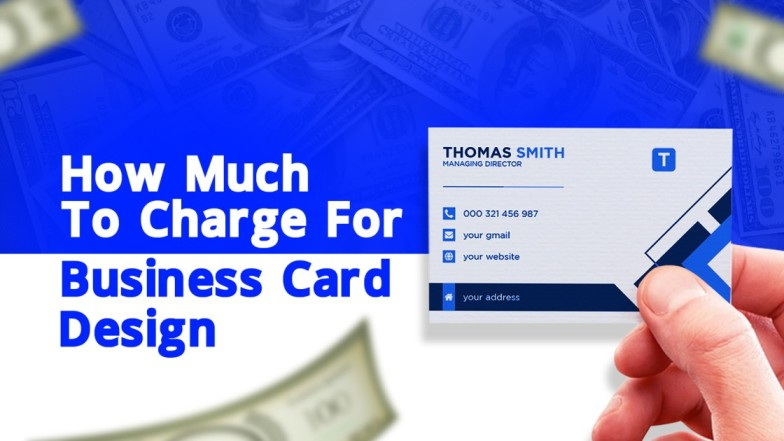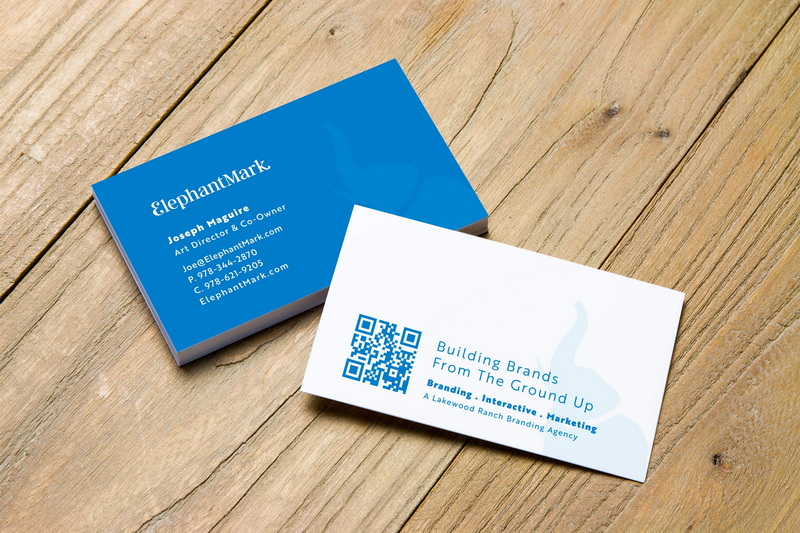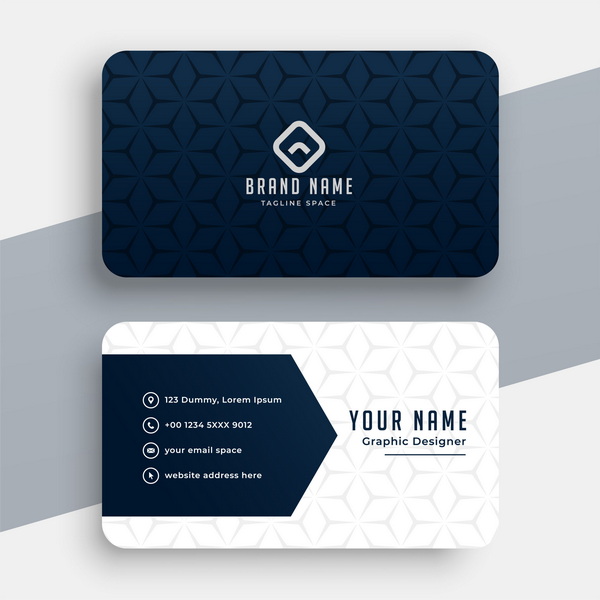Content Menu
● Understanding the Importance of a Well-Designed Business Card
>> First Impressions
>> Brand Representation
>> Networking Tool
>> Marketing Communication
● Factors Influencing Business Card Design Costs
>> Complexity of Design
>> Experience of the Designer
>> Customization
>> Revisions
>> Turnaround Time
● Business Card Design Cost Ranges
>> DIY (Free - $50)
>> Budget-Friendly Options ($50 - $200)
>> Mid-Range Options ($200 - $800)
>> High-End Options ($800+)
● Additional Costs to Consider
>> Printing Costs
>> Shipping Costs
>> Taxes
● Tips for Saving Money on Business Card Design
>> Do Your Research
>> Provide a Clear Brief
>> Be Open to Suggestions
>> Consider a Simpler Design
>> Negotiate
>> Print in Bulk
● Conclusion
● FAQ
>> 1. What is the standard size for a business card and how does it influence the cost?
>> 2. How do freelance designer rates compare with those of design agencies for business card design?
>> 3. What are the cost-effective options for businesses looking to design business cards on a budget?
>> 4. How does the choice of materials and finishes affect the overall cost of business cards?
>> 5. What are some common mistakes to avoid when budgeting for a business card design project?
● Citations:
A business card is more than just a small piece of paper; it's a tangible representation of your brand, a conversation starter, and a memorable takeaway in the fast-paced world of networking and business. In today's digital age, while online presence is crucial, the power of a well-designed business card remains undeniable. It serves as a physical reminder of your interaction and provides essential contact information in a convenient format[2][3]. As a result, investing in a professional business card design is a strategic move for any business or individual looking to make a lasting impression[3].
However, one of the first questions that arises when considering a business card design is, "How much will it cost?" The answer, unfortunately, isn't straightforward. The cost of a business card design can vary significantly based on several factors, ranging from the complexity of the design to the experience of the designer or agency you choose[2][5]. This article will delve into the various aspects that influence the price of business card design, providing a comprehensive overview to help you make an informed decision.

Understanding the Importance of a Well-Designed Business Card
Before we dive into the cost factors, it's essential to understand why a well-designed business card is so important.
First Impressions
Your business card is often the first tangible interaction a potential client or partner has with your brand[3]. A professionally designed card can instantly convey credibility, professionalism, and attention to detail. On the other hand, a poorly designed or generic card can create a negative impression, suggesting a lack of quality or care[3].
Brand Representation
A business card should align with your overall brand identity, reflecting your brand's values, personality, and aesthetic[2]. It should incorporate your logo, color scheme, and typography in a cohesive and visually appealing manner. A well-branded business card reinforces brand recognition and helps create a consistent brand experience[3].
Networking Tool
Business cards are essential tools for networking events, conferences, and meetings[6]. They provide a quick and easy way to exchange contact information and initiate follow-up conversations. A memorable business card can help you stand out from the crowd and increase the likelihood of people remembering you and your business[3].
Marketing Communication
A business card is a marketing communication tool that acts as a symbol of your company[2]. It's a mini-billboard that fits in your pocket, helping you turn people you meet into customers, collaborators, and friends[3].
Factors Influencing Business Card Design Costs
Several factors influence the cost of business card design. These include the design's complexity, the designer's experience, the level of customization, the number of revisions, and the turnaround time[2].
Complexity of Design
The complexity of the design is a primary driver of cost[2]. A simple, minimalist design with basic typography and a logo will generally be less expensive than a complex design with custom illustrations, intricate graphics, or unique shapes[2].
- Simple Designs: These typically involve clean lines, clear typography, and a focus on readability. They may include a logo and essential contact information.
- Complex Designs: These can incorporate custom artwork, detailed patterns, or unconventional layouts. They may also involve special printing techniques such as embossing, debossing, or foil stamping.
Experience of the Designer
The experience and expertise of the designer or design agency will also significantly impact the cost[2]. Seasoned professionals with a proven track record typically charge more than inexperienced or novice designers[2].
- Freelance Designers: Freelancers can offer a range of pricing options depending on their experience level. Entry-level freelancers may charge lower rates, while experienced freelancers with specialized skills will command higher fees[1].
- Design Agencies: Design agencies typically have higher project minimums due to their overhead costs and the expertise of their team[1]. However, they can offer a more comprehensive approach with a team of designers, project managers, and marketing strategists.
Customization
The level of customization you require will also affect the cost of your business card design[2]. Standard business cards with traditional shapes and sizes are generally less expensive than custom-shaped or sized cards[5].
- Standard Sizes: The standard business card size in North America is 3.5 x 2 inches[2][5].
- Custom Sizes and Shapes: Non-standard sizes or unique shapes, such as rounded corners or die-cut designs, can increase production costs[2][5].
Revisions
Most designers include a certain number of revisions in their initial quote[2]. If you require additional revisions beyond the agreed-upon limit, you may incur extra charges. To minimize revision costs, it's essential to provide clear and detailed feedback to your designer[2].
Turnaround Time
If you need your business card design completed within a tight timeframe, you may be charged a rush fee[2]. Designers often prioritize projects with urgent deadlines, which can impact their availability and workload.

Business Card Design Cost Ranges
Given the various factors influencing cost, it's helpful to understand the different price ranges you can expect when commissioning a business card design[1].
DIY (Free - $50)
For those on a very tight budget or who enjoy a hands-on approach, DIY business card design is an option[3][5].
- Online Templates: Many online platforms offer free or low-cost business card templates that you can customize with your own information and branding[3]. Examples include Canva, Vistaprint, and Moo.
- Pros: Affordable, quick, and easy to use.
- Cons: Limited customization options, generic designs, and potential for low-quality results[1].
Budget-Friendly Options ($50 - $200)
This price range is suitable for small businesses or individuals who need a basic but professional business card design[4].
- Entry-Level Freelancers: Hiring a freelance designer with limited experience can be a cost-effective option[1]. You can find freelancers on platforms like Upwork, Fiverr, and Guru.
- Design Contests: Design contest platforms like Crowdspring allow you to post a brief and have multiple designers submit concepts. You then choose the design you like best.
- Pros: More customization options than DIY templates, access to a wider range of design styles.
- Cons: Quality can vary, may require more time and effort to manage the design process.
Mid-Range Options ($200 - $800)
This price range offers a good balance between quality and affordability[1]. It's suitable for businesses that want a custom-designed business card that reflects their brand identity[1].
- Experienced Freelancers: Hiring an experienced freelance designer with a strong portfolio can ensure a high-quality design[1].
- Subscription-Based Design Services: Some companies offer subscription-based design services where you pay a monthly fee for unlimited design requests. This can be a cost-effective option if you have ongoing design needs.
- Pros: High-quality design, personalized service, and greater attention to detail[1].
- Cons: Can be more expensive than budget-friendly options.
High-End Options ($800+)
This price range is for businesses that want a premium business card design and are willing to invest in top-tier talent and resources[1].
- Design Agencies: Hiring a design agency provides access to a team of experienced designers, project managers, and marketing strategists[1]. Agencies can offer a comprehensive branding package, ensuring that your business card aligns with your overall brand identity.
- Specialty Designers: Some designers specialize in creating unique and high-end business cards using premium materials and printing techniques.
- Pros: Exceptional design quality, comprehensive branding services, and a dedicated team of professionals[1].
- Cons: Most expensive option, may require a significant investment.
Additional Costs to Consider
In addition to the design fee, there are other costs to consider when budgeting for business cards.
Printing Costs
The cost of printing business cards can vary depending on the quantity, paper stock, printing technique, and finish[5][6].
- Quantity: The more cards you print, the lower the per-card cost[6].
- Paper Stock: Premium paper stocks, such as textured or recycled paper, can increase printing costs[5].
- Printing Technique: Digital printing is generally less expensive than offset printing, but offset printing offers higher quality for large quantities.
- Finish: Special finishes, such as gloss, matte, or spot UV coating, can add to the printing cost[2].
Shipping Costs
If you order your business cards online, you may need to pay for shipping[6]. Shipping costs can vary depending on the speed and distance of delivery.
Taxes
Depending on your location, you may need to pay sales tax on your business card design and printing services.
Tips for Saving Money on Business Card Design
If you're on a tight budget, there are several ways to save money on business card design without sacrificing quality.
Do Your Research
Before hiring a designer, take the time to research different options and compare prices[1]. Look at portfolios, read reviews, and ask for quotes from multiple designers or agencies.
Provide a Clear Brief
A clear and detailed design brief can help minimize revisions and save time and money[2]. Include information about your brand, target audience, design preferences, and any specific requirements.
Be Open to Suggestions
While it's essential to have a clear vision for your business card, be open to suggestions from your designer. They may have creative ideas or insights that can improve the design and make it more effective.
Consider a Simpler Design
A complex design isn't always better. A simple, well-executed design can be just as effective and more cost-effective[2].
Negotiate
Don't be afraid to negotiate with designers or agencies. They may be willing to offer a discount or adjust their pricing to fit your budget.
Print in Bulk
Printing a larger quantity of business cards can reduce the per-card cost[6]. Consider ordering a larger batch to save money in the long run.
Conclusion
The cost of a business card design can vary widely depending on several factors, including the complexity of the design, the experience of the designer, the level of customization, and the printing costs[1][2]. By understanding these factors and exploring the different pricing options, you can make an informed decision and find a business card design that fits your budget and meets your needs. Whether you opt for a DIY template, a freelance designer, or a design agency, remember that a well-designed business card is an investment in your brand and can help you make a lasting impression[3].

FAQ
1. What is the standard size for a business card and how does it influence the cost?
The standard business card size in North America is 3.5 x 2 inches. This size is widely accepted by printing services, making it a cost-effective choice. Deviating from this standard, such as opting for larger or custom shapes, can increase costs due to the need for specialized cutting and handling during the printing process[5].
2. How do freelance designer rates compare with those of design agencies for business card design?
Freelance designers typically offer more flexible pricing, ranging from $50 to $800, depending on their experience and the complexity of the design[1]. Design agencies, on the other hand, usually charge higher rates, starting from $800 and potentially exceeding $2,000, as they provide a more comprehensive service that includes project management, branding strategy, and a team of specialized designers[1].
3. What are the cost-effective options for businesses looking to design business cards on a budget?
For businesses with limited budgets, cost-effective options include using online templates from platforms like Canva or Vistaprint, which can range from free to $50[5]. Another option is to hire entry-level freelancers through platforms like Upwork or Fiverr, where prices can range from $50 to $200. These methods allow for basic customization while keeping expenses low[1].
4. How does the choice of materials and finishes affect the overall cost of business cards?
The choice of materials and finishes can significantly impact the overall cost. Standard card stock is the most affordable option, while premium materials like textured or recycled paper increase the price[5]. Finishes such as matte, gloss, or spot UV coating also add to the cost, with specialty finishes like foil stamping or embossing being the most expensive[2].
5. What are some common mistakes to avoid when budgeting for a business card design project?
Common mistakes include underestimating the value of professional design, not accounting for revision costs, and overlooking printing and shipping expenses. It's essential to allocate sufficient budget for quality design that accurately represents your brand and to clarify the number of revisions included in the design agreement to avoid unexpected charges[2]. Additionally, consider the cost of printing and shipping to ensure the final product meets your expectations without exceeding your budget.
Citations:
[1] https://www.manypixels.co/blog/print-design/custom-business-card-cost
[2] https://icenfiremedia.com/blog/business-card-design-rates/
[3] https://www.crowdspring.com/cost-of-design/business-card-cost/
[4] https://www.reddit.com/r/Design/comments/duxqc/about_how_much_should_i_expect_to_pay_for/
[5] https://www.oyolloo.com/how-much-to-charge-for-business-card-design/
[6] https://wavecnct.com/blogs/news/business-card-statistics
[7] https://graphicdesign.stackexchange.com/questions/79978/how-do-i-charge-to-create-a-business-card-template-for-multiple-people-to-use
[8] https://www.sortlist.com/blog/business-card-design-price/
































